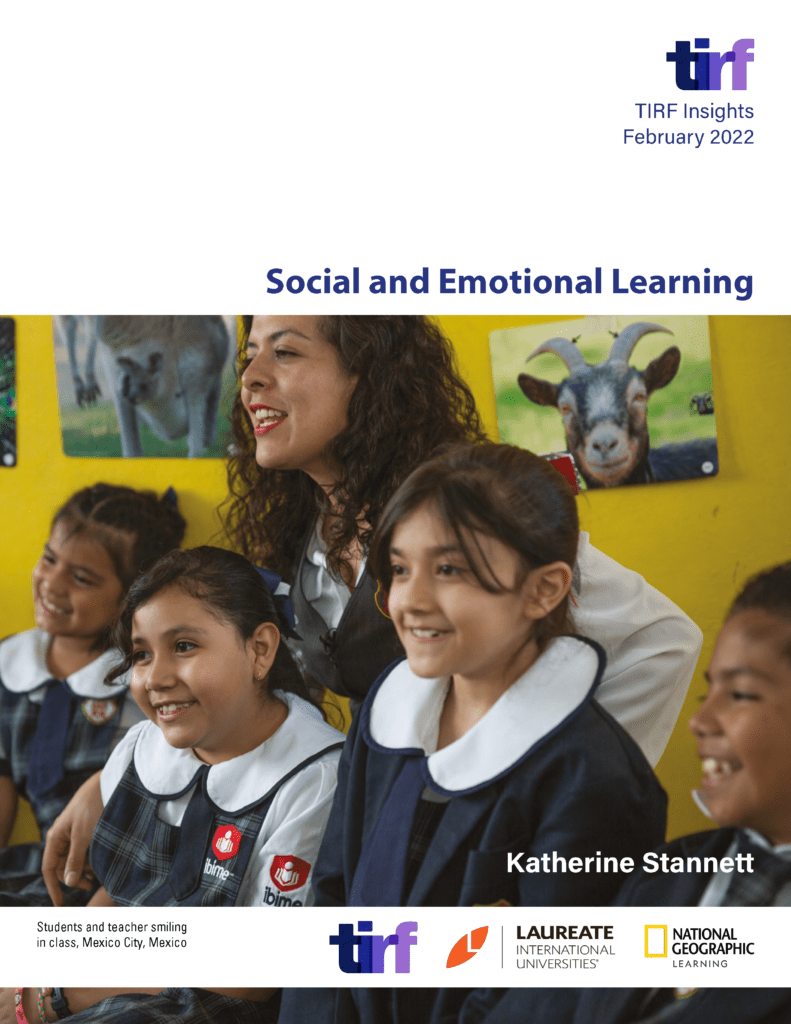
Author: Katherine Stannett
Introduction: A recent report from TIRF investigates the case for social and emotional learning against the backdrop of the COVID-19 pandemic and consequent disrupted education and learning loss.
Context: The pandemic has revealed and underscored a need to address not only students’ academic skills but also their social and emotional skills. The development of social and emotional skills is strongly linked with students’ academic success and has a positive impact on learners’ long-term well-being.
Go Deeper (one-minute read)
What the Research Says: An international study on Social and Emotional Skills, carried out by the OECD (Organisation for Economic Co-operation and Development) in 2021 found that unlike academic learning, which follows a steady upward trend, the development of behavioral and mental well-being stalls and then dips between the ages of 10-15. Social and economic factors play a part in this decline, with students from advantaged backgrounds reporting higher social and emotional skills than their disadvantaged peers in every skill measured (OECD, 2021).

Why It Matters: Rather than viewing behavioral and mental well-being separately from—or as a distraction to—academic study, these elements can be integrated into a balanced approach to promote overall student achievement.
What’s Next: Across the literature, it is evident that social and emotional skills should be seen not as an extra subject to be added to the curriculum, but as a core learning objective to be integrated throughout the student’s life at school, at home, and in the community. Implementing SEL (social-emotional learning) strategies in classrooms could be approached in four major ways:
- Through classroom content
- Through classroom practice
- Via whole-school recognition of SEL
- Through the community
Educators and local decision-makers must now lead the change from a content-led and results-based focus in schools to a system that recognizes and rewards social, emotional, and behavioral skills.
Read the Report: http://www.tirfonline.org/resource/tirf-insights-social-and-emotional-learning/

Calls-to-Action:
You and your colleagues may want to explore further some of the themes in the paper linked to above. Here are some questions for guiding a discussion around your shared perspectives on social and emotional learning.
1. How do we currently recognize and reward the development of social and emotional skills in our school(s)? What more can we do? How can we demonstrate to our students that social and emotional skills are valued and important?
2. What is the vocabulary around social and emotional learning that we want to use in our school(s) and community? When we use terms like grit, growth mindset, and resilience, what exactly do we mean? Can we think of examples, anecdotes, and stories to illustrate their meaning for us and our students?
3. Who are the role models and leaders in our local community? You can think about people in the arts, sports, environmental advocacy, business, and technology. How can we encourage these role models and leaders to form connections with our school(s) and students?
4. How can we help our students feel like stakeholders in our school(s)? What responsibilities can we give them? How can we involve students in genuine decision-making processes?

